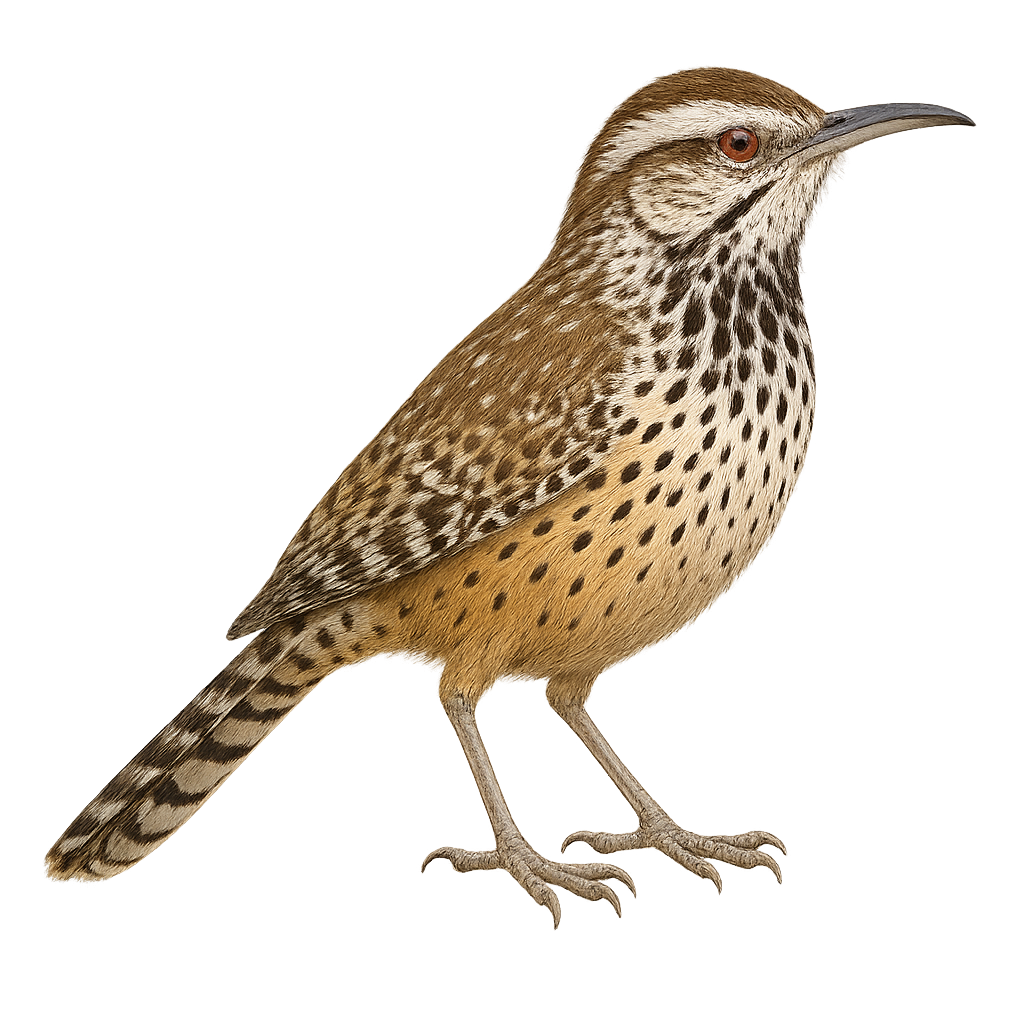Your wildlife photography guide.
Explore the cactus wren in detail, study its behavior, prepare your shots.
Where to observe and photograph the cactus wren in the wild
Learn where and when to spot the cactus wren in the wild, how to identify the species based on distinctive features, and what natural environments it inhabits. The WildlifePhotographer app offers tailored photography tips that reflect the cactus wren’s behavior, helping you capture better wildlife images. Explore the full species profile for key information including description, habitat, active periods, and approach techniques.
Cactus Wren
Scientific name: Campylorhynchus brunneicapillus

IUCN Status: Least Concern
Family: TROGLODYTIDAE
Group: Birds
Sensitivity to human approach: Suspicious
Minimum approach distance: 10 m
Courtship display: March to May
Incubation: 13-17 jours
Hatchings: March to June
Habitat:
deserts, arid scrublands, semi-arid areas
Activity period :
Primarily active during the day, with peak activity in the morning and late afternoon.
Identification and description:
The Cactus Wren, or Campylorhynchus brunneicapillus, is a robust and noisy bird typical of the desert regions of the southwestern United States and northern Mexico. It is easily recognizable by its brown plumage speckled with white, long tail, and slightly curved beak. This bird is particularly adapted to life in arid environments, where it builds its large nests in cacti and thorny shrubs. The Cactus Wren is known for its powerful and varied song, which it uses to defend its territory. It primarily feeds on insects but also consumes fruits and seeds. Mainly active in the morning and late afternoon, it avoids the hottest hours of the day.
Recommended lens:
400mm – adjust based on distance, desired framing (portrait or habitat), and approach conditions.
Photography tips:
To photograph the Cactus Wren, it is advisable to use a telephoto lens of at least 400mm to capture detailed images without disturbing the bird. Look for it early in the morning or late in the afternoon when the light is soft and the bird is most active. Try to position yourself near cacti or bushes where it might nest. Be patient and discreet, as although this bird is suspicious, it can get used to your presence if you remain still.
The WildlifePhotographer App is coming soon!
Be the first to explore the best nature spots, track rutting seasons, log your observations, and observe more wildlife.
Already 1 439 wildlife lovers subscribed worldwide

